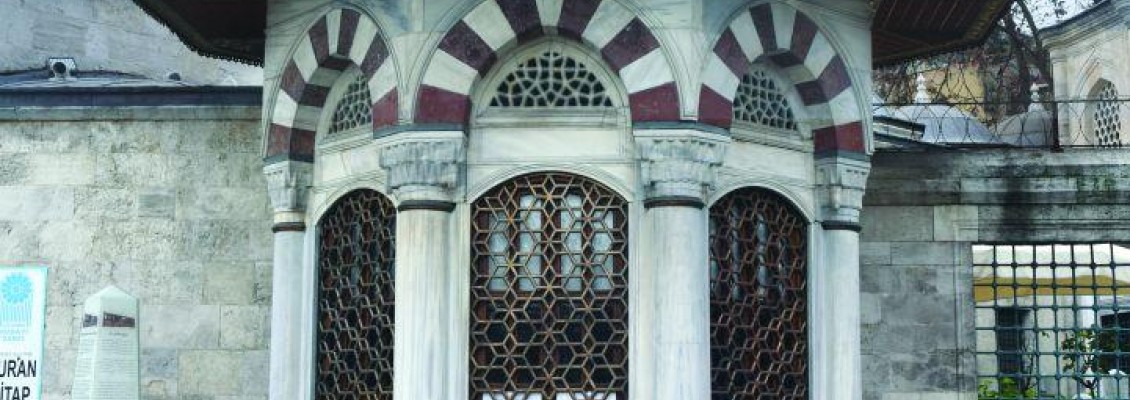
WHAT ARE THESE STRUCTURES THAT WE SEE ALMOST EVERYWHERE IN ISTANBUL?
These structures, which we come across almost every step of the way along the historical peninsula of Istanbul, are known as sebils, kiosks with public fountains. The word “sebil” is defined differently by many sources. This word, which literally means “road”, is used in Turkish sources to refer to “a charitable facility established in the way of Allah”, “foundation buildings built for passers-by in busy neighbourhoods to drink cold, clean water free of charge”, “hayrat (charity) fountain”, or “a place that distributes water to passersby”. In short, a sebil is generally used to mean a structure where water is distributed. However, it is known that sherbet and fruit juice were also distributed to the public from the dispensers on certain occasions. We also have some information about the opening hours of the dispensers. For example, according to one source, the opening hours of the dispensers would vary: some were open all day, while others were open all day and night in Ramadan. Some of them were open during specific hours such as between noon and night prayers, while others were only open in summer.
The dispensers were designed as a single window or as a kind of monument, covered with a dome, with fountains inside and outside. Depending on their location and form, they might be arranged as a detached structure, or corner, facade and window dispenser.
Although one of the reasons why these fountains were so numerous was to meet the water needs of the people of the region, there was actually a reason other than this. In Turkish-Islamic culture, there is a special significance to having a water dispenser built. As you might remember from our article on Zakah (Almsgiving) and Sadaqah (Charity), there is a concept known as sadaqah al-jariyah (ongoing charity) in Islam. This concept is inspired by the following hadith of Prophet Muhammad ﷺ: "When a person dies, his deeds end except for three: ongoing charity (sadaqah al-jariyah), beneficial knowledge, or a righteous child who prays for him.”
Water is one of the most basic human needs. These fountains, which were built at different points in Istanbul, have been sadaqah al jariyah (ongoing charity) for centuries, providing water to people and other living things. Today, some are still in use as water fountains, while others are used for other purposes. In this article, we will talk about some of these sebils.
1. Hamidiye Sebil
The splendid dispensers and fountain in front of the Zeynep Sultan Mosque, opposite the Gülhane Park entrance gate, were built in 1777 by Sultan Abdülhamid I. The fountain, featuring gorgeous stone work, is divided into four sections by double columns. The dispenser section is covered with a dome. Its wide eaves extend over the fountains on both sides. There are inscriptions in cartouches on the upper part of each section of the dispenser. The fountains are enclosed by cylindrical columns. Its facades are decorated with baroque relief, as is the fountain.
2.The Sebil of Mahmut II
The fountain in Mahmud the Second’s tomb complex is a fascinating reflection of its era. The overhanging circular fountain is divided by four Tuscan columns, and has five windows with rectangular openings. The structure, which has an unornamented architrave vault on top, was designed according to a layout very popular in Europe, and is the first and only example of its kind in Istanbul. There are four openings for the distribution of water under the metal grilles on the facade. The structure is covered with a dome.
2. Gazanfer Ağa Sebil
This sebil was built towards the end of the 16th century, located in the Gazanfer Ağa Complex, together with the madrassa and the tomb. Located in the northeast corner of the outer courtyard wall of the complex, the fountain is octagonal, five corners of which protrude. It fell into a state of disrepair until 1943, when it was renovated, with the addition of broad eaves. Between the grilles, there are marble columns topped with muqarnas, and arches fashioned from bicolored stone. There is a carved stone grille inside each arch. The grilles under them are cast in bronze. There is also a well inside the dispenser. There is malakari ornamentation on its dome.
3. Kılıc Ali Pasha Sebil
The sebil of the Kılıç Ali Pasha Complex was built by Mimar Sinan. The construction of the complex was ordered by Admiral Kılıç Ali Pasha in 1580-1583, where Tophane Meclis al-Mabusan Street and Tophane Pier street intersect on the Rumeli side of the Bosphorus.
4. The Sebil of Ahmediye Mosque
It was built in 1721-22 together with the Ahmediye Mosque, madrassa, school, library and fountain. This is the most exquisitely elegant work of its time, built by the founder of the complex, Eminzâde Hacı Ahmet Ağa. To the right of the sebil lies the courtyard door of the mosque and its marble fountain, with the Ahmediye School above it. The sebil is made entirely of marble, and has three windows with iron grilles, between four slender columns. The columns are adorned with stalactite capitals and connected with marble arches. There is a twelve-line inscription under the wooden eaves, in the shape of a peacock tail, and two couplets on the front of each window. This inscription continues on the marble arches above the windows.

Leave a Comment